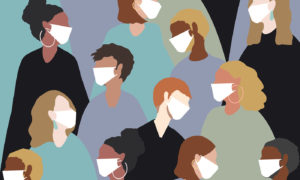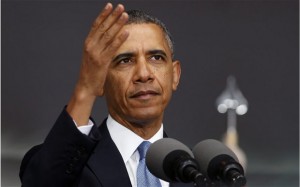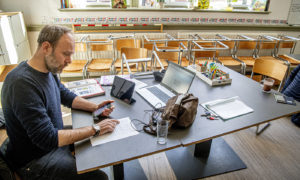
A roundup of articles on the status of the Coronavirus and ways we can help….
Thanks to Brian.
Food for Thought from Sacha Stone
Robert David Steele interviews Sacha Stone on his view of the larger picture of Coronavirus and what we’re doing right and what wrong. Sacha looks at the role of 5G in the spread of the virus.
The write-up:
In sixteen minutes Sacha Stone — Zimbabwe-born, massive rocker turned do-gooder, founder of Humanitad, seer of the New Earth, and the most erudite articulate teacher of the space where science and spirit meet to create cosmic sparks, provides both a sharp criticism of what is being done badly by the mandarins of madness, and an equally powerful and uplifting manifesto for what is going right — the battle for the soul of humanity will take place in April, humanity wins, Deep State loses, life will never be the same again, it will be better — more local, more family, more spiritual, more revolutionary.

Is this what happened to President Obama?
The Deep State Threatens Pres. Obama
Excerpt on Pres. Obama from David Wilcock on the Great Pandemic, Part IV: Answering Your Questions!
The first thing that happened to Obama was that, after he won the election, and there was that private meeting with all the presidents, he had – and you can look at this online; it’s available in the news reports about that first meeting with all the presidents – they will say in there that there was an approximately 20-minute meeting that he had in private with George Bush Sr.
What you don’t know, unless you’ve heard me talk to you about this before, is that in that private meeting George Bush Sr., went fricking crazy and turned demonic and started threatening Obama.
And he actually got all toothy and wild like this and used the n-word repeatedly and said, “Look you [effing n], if you ever do anything except what we tell you to do, your whole family is going to be tortured, raped, and killed in front of your eyes.
And then Obama staggered out of the room. There was a CIA guy that was in the telephone booth that he didn’t see.
And he collapsed down and he was sitting on a sofa and he put his head into his hands and said, “My God, they made the [n-word] into a scapegoat.”
And that makes me very sad because apparently based on stuff we get from Q, Obama took the death threats very seriously and did cooperate with several things that these people were doing.

ROTTERDAM, NETHERLANDS – 2020/03/23: A teacher gives digital classes at his empty Globettroter school in Rotterdam.
The Dutch government has ordered all schools to be closed until further notice in attempt to control the spread of the COVID-19 Coronavirus. Students are to be home schooled with digital means such as laptops, digital tablets or mobile phones. (Photo by Robin Utrecht/SOPA Images/LightRocket via Getty Images)
How Schools Worldwide Are Tackling the Coronavirus Challenge
Schools are closed for hundreds of millions of students, but educators, parents, and children are still learning—including how to keep a sense of connection.
By Ann Scott Tyson, Lenora Chu, and Sarah Matusek, Yes! Magazine, Mar 31, 2020
Cats, puppies, and stuffed animals prance across Tracy Westberg’s screen.
A sixth grade social studies teacher north of Seattle, Westberg is conducting a virtual session on the Tuesday after her Washington state school district’s switch to all-online education, because of the coronavirus.
Westberg had planned a session about world religions, only to watch her students erupt into silliness and gleeful chaos, as they seized the chance to share their most cherished home items with classmates during a show-and-tell break.
It’s been an unexpected joy amid a massive online education experiment.
“OK, time out!” Westberg says, clicking “mute” to regain control of the group of about 60. After a pause, her students continue to astonish her. As she launches an overview of Buddhism, her students post queries in a shared virtual chat. Other students jump in to answer.
“I’m super excited,” Westberg says after closing the session Tuesday. The sidebar chatting among students would not have happened in a brick-and-mortar classroom.
As authorities worldwide attempt to slow the spread of the coronavirus by closing schools and universities, more than 420 million K-12 and college students on five continents have found themselves suddenly at home full time, their learning punted onto virtual forums.
So far in the United States, 29 states—including Oregon, Ohio, Louisiana, Michigan, Maryland, New Mexico, Virginia, West Virginia, and Wisconsin—and the District of Columbia have closed public schools for the remainder of the school year. Whether schools will reopen in the fall is undetermined.

A teacher from Yung Wing School P.S. 124, who wished not be identified, remote teaches on her laptop from her roof in New York City on March 24, 2020. Due to the spread of the novel coronavirus (COVID-19), all New York City public schools have launched remote learning programs for all students. Photo by Michael Loccisano/Getty Images.
For educators from Shanghai to New York, this means figuring out not only how to deliver content, but also how to maintain a sense of community that is typically generated in person. Priorities include creating online materials, ensuring low-income K-12 students don’t lose access to meals, and making sure that college students are not abandoned on campus. While obstacles remain, the innovation and resilience of faculty, parents, and students suggests communities are connecting—and forging a path through this crisis.
“The digitalization element is just a game changer,” says Tracey Burns, a futurist and Organization for Economic Co-operation and Development education analyst. “We’re seeing that we have opportunities to share knowledge across countries and get kids online that we didn’t have just five years ago.”
For those who’ve closed first, some success
The move online has the potential to fragment communities for which schools are the glue, especially where computers and Wi-Fi access are not readily available. But educators who have a head start on virtual education—and some parents and students—are seeing indications that the opposite can be true.
“We are learning new tools that will empower so much of the work we do,” says Audee Gregor, principal of Leota Middle School, whose 930 students transitioned in just a few days from classroom to cloud-based learning, along with the rest of the Northshore School District. Online platforms such as Zoom and Google Classroom help to prevent social isolation, Gregor says, and are also creating new potential for collaboration.
In China, where Zoom, WeChat, and DingTalk are the tools of choice, school leaders discovered teachers needed to collaborate on how to use technology to keep students engaged. Showing papers in front of a laptop camera didn’t work so well; being more creative with screencasts did.
Six weeks into its new virtual reality, the 600 students at high-performing Shanghai Qibao Dwight High School in China have been participating in daily live Zoom lessons. They’re on track to take International Baccalaureate and International General Certificate of Secondary Education exams at the end of the semester.
“These kids haven’t left the house in 50 days, yet they’re joining in, staying in the game,” says Qibao Dwight American principal Brantley Turner. “It breaks my heart, the power of the community coming together. They’re respectful, never blaming, rising to meet the challenge.”
In Italy, which is under complete lockdown, Rania Hammad is enjoying having her fourth- and sixth-grade daughters at home in Rome, though she admits the overall situation sometimes feels “absurd and weird.” Online classes have gotten more engaging as teachers fine-tuned their approach and made them more interactive. “It’s actually fun and they are learning,” Hammad says. “They are enjoying it.”
Thousands of miles away, Rabbi Jonathan Kroll, co-principal of private SAR High School in New York City, has noticed something similar. His school has been online-only since March 3, and beyond academics, the staff is trying to branch out with new ideas: chemistry demonstrations in a teacher’s kitchen, Broadway show-tune singalongs.
Rabbi Kroll also teaches an online Talmud class to ninth-graders via Zoom. “I said to my class the other day … I’m going to say something that’s very ironic: I feel so much closer with my students, even though I am more isolated from them than I’ve ever been. And they went: Yes!”
“When you’re experiencing something challenging together,” he says, “that bond just feels like it’s been strengthened, not weakened, by the distance.”

Getting low-income families online
Back in Bothell, Washington, Westberg’s Northshore School District, with more than 23,500 students, has been online since [March 9]. More than 500 teachers and staff there were at high risk, with some in self-quarantine, leaving inadequate staffing to safely run the schools, officials explained.
First, administrators had to ensure all families had access to digital tools. Fortunately, the area is home to many families who work in high-tech, and last week companies and parents offered up computers and hotspot devices for those without. As of [March 11], more than 4,000 families made requests, and when demand outstripped supply, T-Mobile stepped in with equipment donations.
Online education provider Outschool has also offered teachers and staff free training on remote instruction tools. Up next, the company is looking into free online classes for select communities who can’t afford to pay.
Certainly, communities such as Northshore are in a better position to switch to online learning, UNICEF spokesperson Christopher Tidey says. “If you’re in a country that doesn’t have that level of technological infrastructure, then remote learning through the internet is not possible [but] maybe the radio makes sense,” he says, noting that conflict zones have additional challenges.
Home learning strategies
Meanwhile, in a parent webinar [that first week of online learning], Northshore Superintendent Michelle Reid greeted families virtually. “It’s fabulous to have you online this morning,” Reid says cheerfully. “In every possible way, community is maintained as long as we maintain our connections.”
District officials counseled parents on how to set up effective home learning environments. Pointers included refraining from parking kids in front of a screen all day. This is especially important, some educators say, for elementary kids used to more cooperative learning. Families should also set clear expectations and arrange family study sessions where siblings help each other.
Officials are also helping manage day care for families whose parents work outside the home. Five locations have been allocated for community partners to provide child care, including online learning access, meals, and play time, with the Northshore School District’s foundation providing scholarships to families who can’t afford it.
Of course, that still leaves parents with the task of juggling multiple offspring with different assignments, in crowded quarters. “I can’t have [high school sophomore] Hank submitting clarinet assignments while [sixth grader] Lily is trying to Zoom with her class live,” says Anne Davidson, a sixth and seventh grade math teacher and mother of three Northshore students in high, middle, and elementary schools.
Parents of young students face the biggest new demands from the switch to home learning. “These first two days have been critical for me to assist them,” says Stacey Van de Mark, of helping her first- and third-grade children navigate online platforms and pull up new assignments.
All three work at the kitchen counter and table, while her 3-year-old son plays nearby. “They had no hands-on time with teachers to learn this, and I have never used it either,” she adds. “There is a learning curve for parents for sure.”
Teachers are also adjusting, as they feel their way through families’ needs. At Southlands International School in Rome, first grade teacher Gemma Jordan has discovered that some working families must rely on babysitters and can’t oversee kids’ online learning. Not overwhelming families is key, she says. “I’m trying to provide a mixture of hands-on learning and written work.”
College students also have a learning curve, with dozens of universities from Budapest to Ohio asking students to continue offsite and online. “It’s a little chaotic, but for the most part it’s been OK,” says Bridgette Robertson, a University of Washington biology student who will graduate at the end of this quarter.
Most professors are using Zoom to broadcast lectures at normal class hours, online exams will be “open book and open notes,” and final presentations will be delivered by video conference or slide decks, Robertson explains.

Offline needs
Where schools provide important services to families in need, some U.S. districts are trying to put off closing as long as they can.
Across New York City, where nearly three-quarters of students are considered at or below poverty indicators, the department of education serves up about 900,000 meals a day. Officials are prepared to close the gap if schools shutter, serving “grab-and-go breakfast and lunch for any student who wants it,” writes press secretary Miranda Barbot.
Well aware of the potential hardship, Mayor Bill de Blasio [early on] said closures would be a “last resort,” even though a change.org petition to close schools had collected more than 220,000 signatures. [By March 23, the district—the nation’s largest public school system— moved to remote learning.]
Meanwhile, as more than 200 colleges and universities in the U.S. close or transition to online learning, many are grappling with the impact on students whose circumstances pose challenges.
“How does one go home if there’s no home to go to … or no money to buy plane tickets?” college academic adviser David Perry asked on a Twitter feed. It went viral.
Amherst College, for one, announced students at its Massachusetts campus [had to] be out by March 9, only to modify its approach to “expected to have left campus” [two days later]. Some communities have started online petitions criticizing decision-makers for closing down so quickly without contingency plans.
Meanwhile, some officials are trying to soften the blow, whether it’s offering up to $200 to Harvard students to ship or store items, or continuing to pay work-study wages, per U.S. Department of Education guidance.
Students and alumni are also stepping up to help each other. A “Mutual Aid” Facebook page connects students at Tufts University in Medford, Massachusetts, with volunteers who can help with financial aid, housing, or transportation. As of Friday midday, a student hardship fund page had raised nearly $42,000, and other colleges, including Wellesley, also in Massachusetts, had started student relief giving campaigns.
Keenly aware of the importance of keeping teacher morale high, Turner in Shanghai and fellow principals launched a real-world gift caravan for teachers on International Women’s Day on March 8, delivering to their homes items such as speakers, headphones, electric gadgets, and school-issued iPads. “The teachers are the community glue,” says Ms. Turner. “This is where you see robots don’t replace teachers.”
Rabbi Kroll in New York says similar shows of support rippled through his community. “We have a group of parents who went into the school, collected books, computers, iPads, religious items, prayer books, and have spent a couple of days driving around to hundreds of homes, dropping things off.”
For others, a time to plan
Meanwhile, some U.S. schools are plotting contingency plans, while ultimately hoping that closures aren’t necessary.
That’s the case at the private Science, Language & Arts International School, a French and Mandarin immersion school in New York. “We have many families on financial aid who have very little means, who would not … be able to afford child care, or to not go to work. We also have an international community, many of whom are far away from their family support systems,” says Jennifer Wilkin, the school’s founding director.
Even so, the school’s faculty is preparing this week for the possibility of online learning.
In a sun-soaked Brooklyn classroom, Huan Ren reads aloud “The Three Little Pigs” in Mandarin. The pre-K teacher balloons her cheeks to mime the big bad wolf blowing down the straw house. She is reading before a smart phone, recording in an empty room.

It’s part of an effort to build a virtual library for families. The recordings by native-speaking staff would help students keep up with lessons and stay connected to teachers. “Even facing the camera, it still feels like … they are there listening to me,” Ren says.
“All we can do is plan,” Wilkin says. “If we don’t have to close, then we have a whole bunch of great video resources for our parents.”
Asia London Palomba and Stacy Teicher Khadaroo contributed to this report.
This article was originally published by The Christian Science Monitor. It has been published here with permission. Updates were made to address the number of school closures

